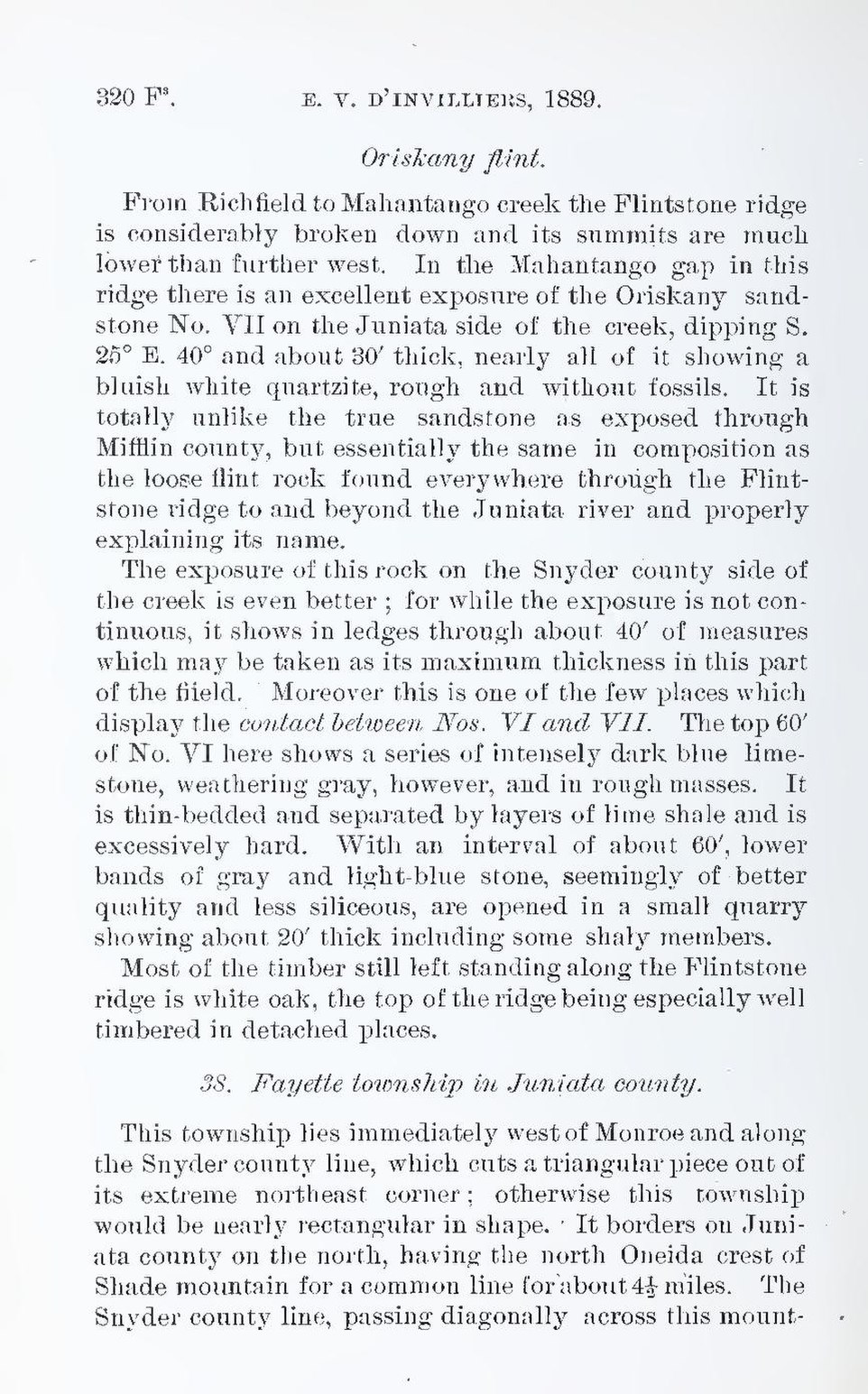Oriskany flint.
From Richfield to Mahantango creek the Flintstone ridge is considerably broken down and its summits are much lower than further west. In the Mahantango gap in this ridge there is an excellent exposure of the Oriskany sandstone No. VII on the Juniata side of the creek, dipping S. 25° E. 40° and about 30′ thick, nearly all of it showing a bluish white quartzite, rough and without fossils. It is totally unlike the true sandstone as exposed through Mifflin county, but essentially the same in composition as the loose flint rock found everywhere through the Flintstone ridge to and beyond the Juniata river and properly explaining its name.
The exposure of this rock on the Snyder county side of the creek is even better; for while the exposure is not continuous, it shows in ledges through about 40° of measures which may be taken as its maximum thickness in this part of the field. Moreover this is one of the few places which display the contact between Nos. VI and VII. The top 60′ of No. VI here shows a series of intensely dark blue limestone, weathering gray, however, and in rough masses. It is thin-bedded and separated by layers of lime shale and is excessively hard. With an interval of about 60′, lower bands of gray and light-blue stone, seemingly of better quality and less siliceous, are opened in a small quarry showing about 20′ thick including some shaly members.
Most of the timber still left standing along the Flintstone ridge is white oak, the top of the ridge being especially well timbered in detached places.
38. Fayette township in Juniata county.
This township lies immediately west of Monroe and along the Snyder county line, which cuts a triangular piece out of its extreme northeast corner; otherwise this township would be nearly rectangular in shape. It borders on Juniata county on the north, having the north Oneida crest of Shade mountain for a common line for about 4½ miles. The Snyder county line, passing diagonally across this mount-
